Last Updated on March 8, 2025 by Owen McGab Enaohwo
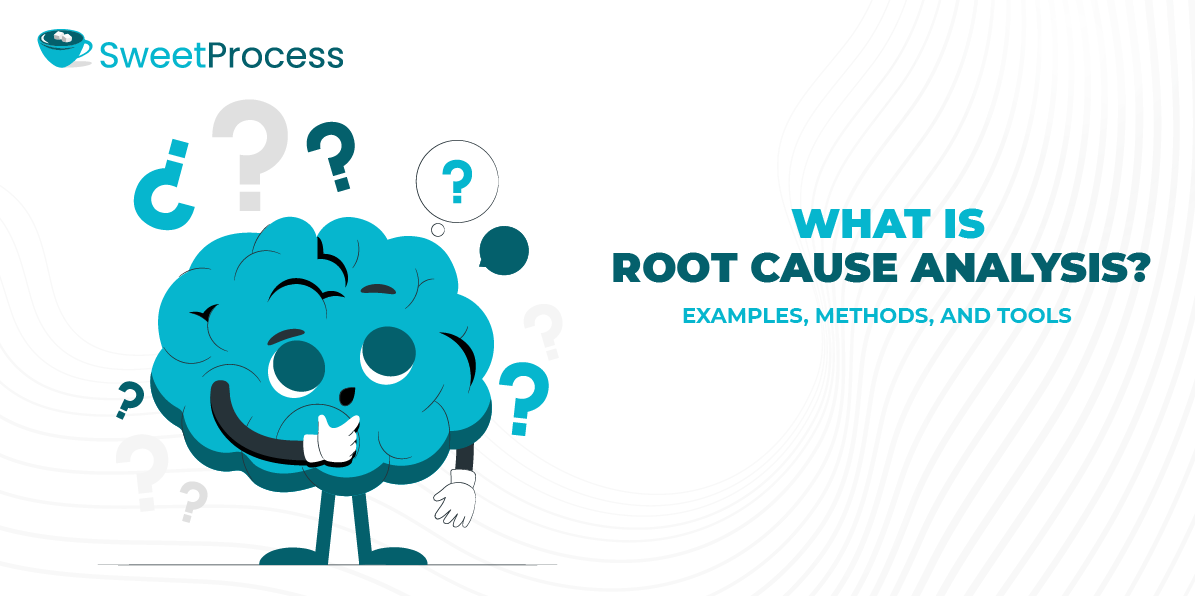
Let’s say you are feeling unwell. One option is to take some over-the-counter medication, feel better, and just let things be. The other choice is to visit the doctor so he can determine the root cause of your feeling unwell. Root cause analysis (RCA) is when you try to identify what exactly led to an issue.
If you had chosen the first choice of just taking some doses of paracetamol, you are only addressing the symptoms of your illness. However, the second choice to visit the doctor utilizes the root cause analysis approach. The same applies to the business world. If your business is underperforming, you want to conduct a detailed root cause analysis and identify the underlying issues and possible solutions. And that is what you’ll be learning in this blog post.
If you have unresolved issues in your business and are preparing to carry out a root cause analysis but need a tool to help you document all your processes and findings in a centralized and accessible location for better decision-making, sign up for a 14-day free trial of SweetProcess without needing a credit card.
What You’ll Learn In This Guide:
Why Is Root Cause Analysis Important?
How to Perform a Root Cause Analysis (In 6 Simple Steps)
Streamline Your Company’s Root Cause Analysis Using SweetProcess
7 Tools for Performing a Root Cause Analysis
11 Benefits of Root Cause Analysis in an Organization
Common Pitfalls in Root Cause Analysis and How to Avoid Them
How Root Cause Analysis Differ From Other Terminologies
Manage Your Company’s Root Cause Analysis Seamlessly Using SweetProcess
What Is Root Cause Analysis?
Root Cause Analysis (RCA) means that for every problem a business faces, you must reach the root first to get the desired solution. By carrying out RCA, you systematically address and prevent underlying issues rather than just treating symptoms and putting out fires as they arise.
Conducting RCA is only possible by deploying some principles, analysis techniques, or methodologies to identify fundamental issues. For instance, imagine a car that stops working. To understand what’s wrong, the technician has to get to the root cause. This can be likened to every situation in life, even a doctor-patient situation. RCA allows businesses to analyze patterns, gather data, and implement long-term solutions that prevent the problem from happening again.
Why Is Root Cause Analysis Important?
1. Identifying and Resolving the Root Causes of an Existing Problem
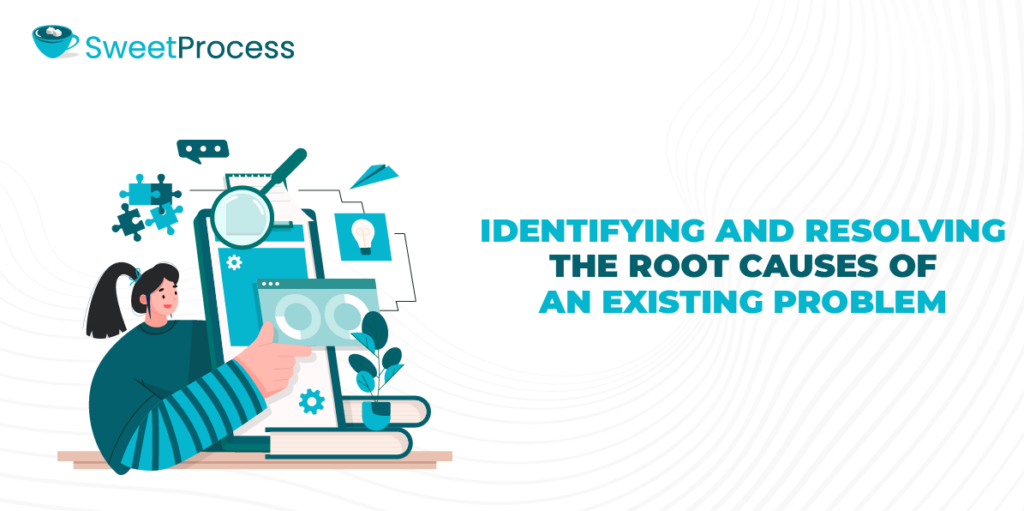
A root cause analysis must be carried out. Instead of just solving problems from the top, RCA allows businesses to dig deep into the root, which aids in finding causes that could go beyond what has been expected. With RCA, you get to understand why the problem existed in the first place. This means that solutions can be easily implemented to prevent recurring issues.
2. Identifying Potential Root Causes of Future Issues and Addressing Them
The root cause analysis helps identify existing causes but also helps to examine and trace the underlying and emerging crises before they become a problem. The RCA uses a proactive approach rather than reactive measures. This feature enables you to create a more substantial business process analysis and avoid a possible problem in the future.
3. Improved Decision-Making
When an RCA is conducted, it enhances decision-making. RCA enables organizations to harness accurate and reliable information regarding an underlying issue. Having the information helps develop effective strategies to avoid recurrence.
4. Enhanced Customer Satisfaction
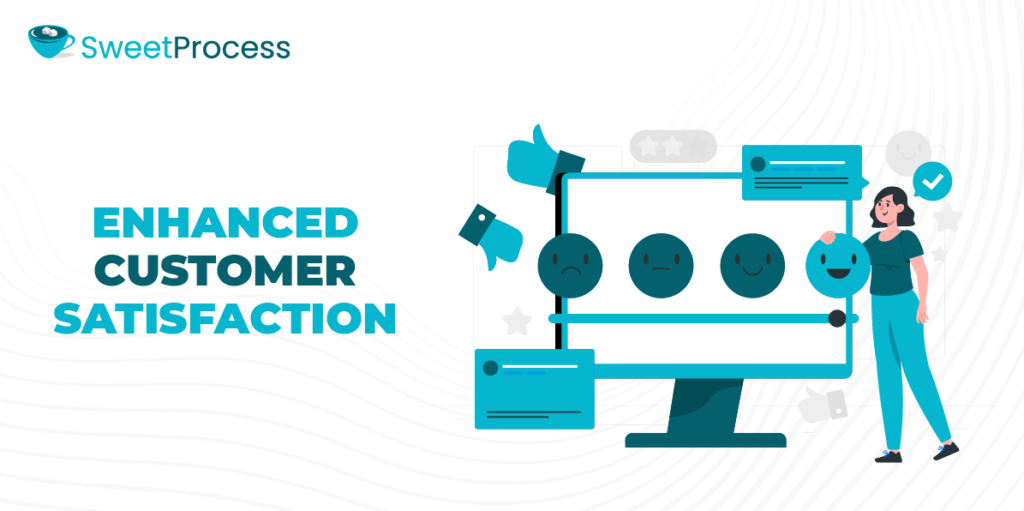
Having a business with no issues promises customer satisfaction. Businesses in a good state and condition can provide customers with a quality product or service they can trust and rely on. With this, the customers can feel safe, resulting in optimal satisfaction.
5. Limited Accident and Issue Occurrences
As the saying goes, prevention is better than cure. Conducting RCA can significantly reduce accidents and minimize recurring issues by identifying their root causes early.
A systematic analysis of past incidents helps businesses implement preventive measures, reducing both the frequency and severity of problems.
This proactive approach contributes to a safer and more efficient work environment, much like a SWOT Analysis, which helps businesses assess potential risks and develop strategies to mitigate them before they escalate.
6. Process Documentation
Every analysis is a record that can be referenced at any time. What must have been a challenge can be an opportunity moving forward. Unlike the usual way of documenting what turns out well, RCA documents what went wrong and how it was addressed.
7. Process Improvement
Root cause analysis goes beyond fixing problems; it allows continuous improvement. RCA creates opportunities that can help develop the team and refine the process. This results in an efficient team and operation.
Do you want to start your RCA journey? Click here for a 14-day free trial of SweetProcess and get access to great features that help make the exercise a breeze.
How to Perform a Root Cause Analysis (In 6 Simple Steps)
Step 1: Identify the Problem
This is the first and most crucial step in analyzing the root cause. Understanding the problem makes you better prepared.
Step 2: Work Backward
After identifying a problem, you should ask yourself, “What if there are more?” Retracing the problem with your team can reveal even more problems. Process mapping and fishbone diagrams can visualize the potential root causes.
Step 3: Determine the Root Cause
The root cause of an issue cannot be determined until questions of how and why a cause occurred are asked. To determine the root cause, an organization should form a cross-functional team across various departments, define and discuss the problem, keep asking “why,” act on the cause, monitor the effects of the solution, and document the process.
Step 4: Come Up With Solutions

After identifying the root cause, the concerned stakeholder or team must brainstorm and propose a solution. This solution should address the existing issue and prevent its recurrence.
Step 5: Implement the Solution
One thing that needs to be understood is that implementation should not be done to get a one-time result; it has to be sustainable. In other words, the process might take some time, but you have to be patient.
Step 6: Monitor, Track, and Report on the Solution
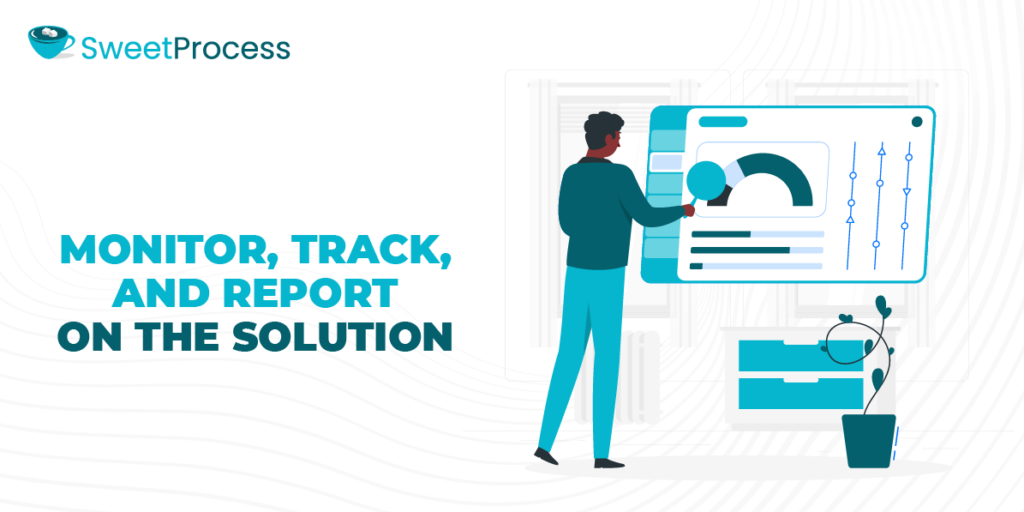
Monitoring, tracking, and reporting on the implemented solution is vital for long-term success. To do this, you have to set up clear metrics to measure the effectiveness of your solution and regularly review progress. Data will be used to validate that the changes are working and to prepare for adjustments.
- Ready to put these steps to practice? These free root cause analysis templates will ease the process for you.
Streamline Your Company’s Root Cause Analysis Using SweetProcess
Below is a step-by-step process on how you can streamline your company’s root cause analysis using SweetProcess:
Document Your Company’s Procedure

The first step in documenting your company’s procedure is to sign up for the 14-day free trial of SweetProcess if you haven’t already done so. You don’t need a credit card; you can cancel anytime, no questions asked.
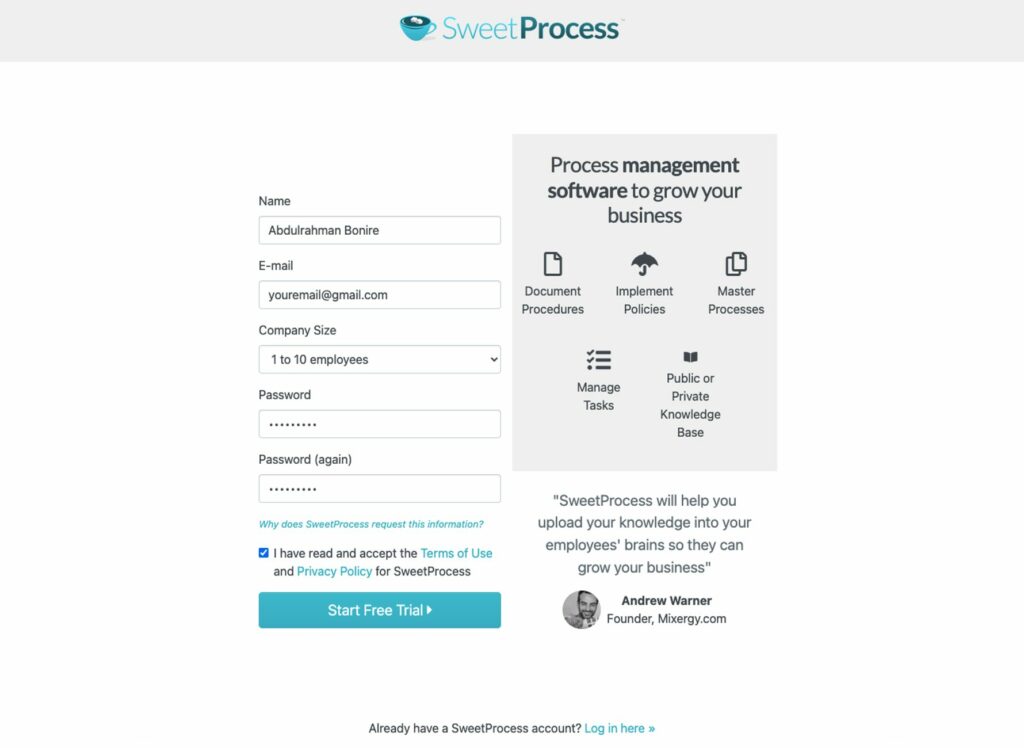
Go to your email and confirm your signup by opening the email from SweetProcess and clicking the confirmation link.
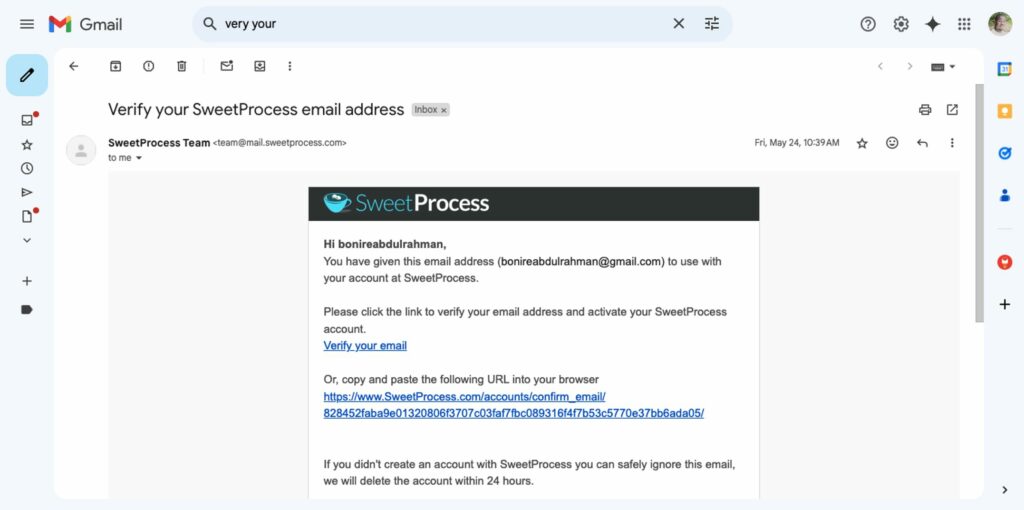
The email confirmation link will take you to your SweetProcess dashboard, similar to the screenshot below.

Click “Create Procedure” from here, as seen in the screenshot below.

You’ll see a screen similar to the screenshot below, where you can name your procedure and choose to create it manually or automatically using SweetAI.

Let’s go with the “Write with SweetAI” option for this. You will see a screen similar to the one below.
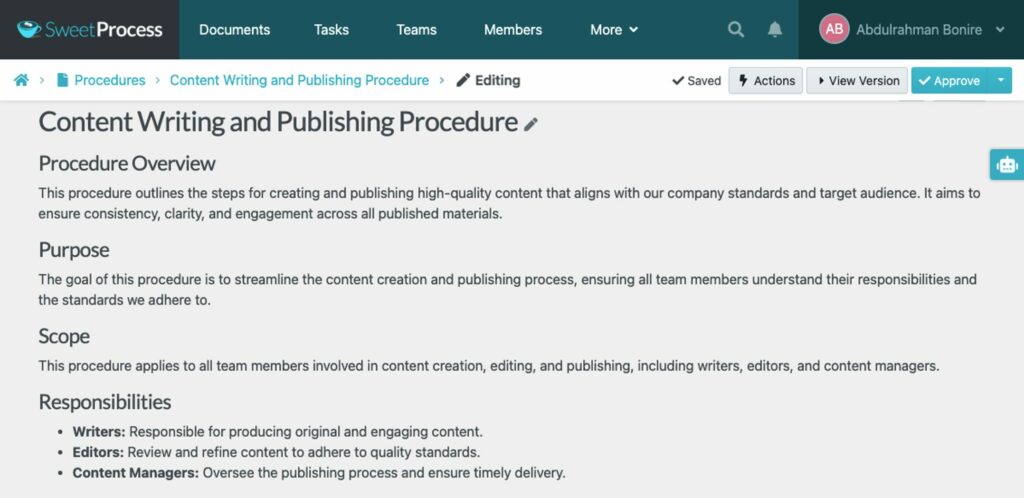
As you can see above, SweetAI did its magic by giving us a detailed content writing and publishing procedure in less than six seconds. You can edit this as you deem fit to suit your needs and brand image. Below is the rest of the procedure, detailing all its steps and processes.
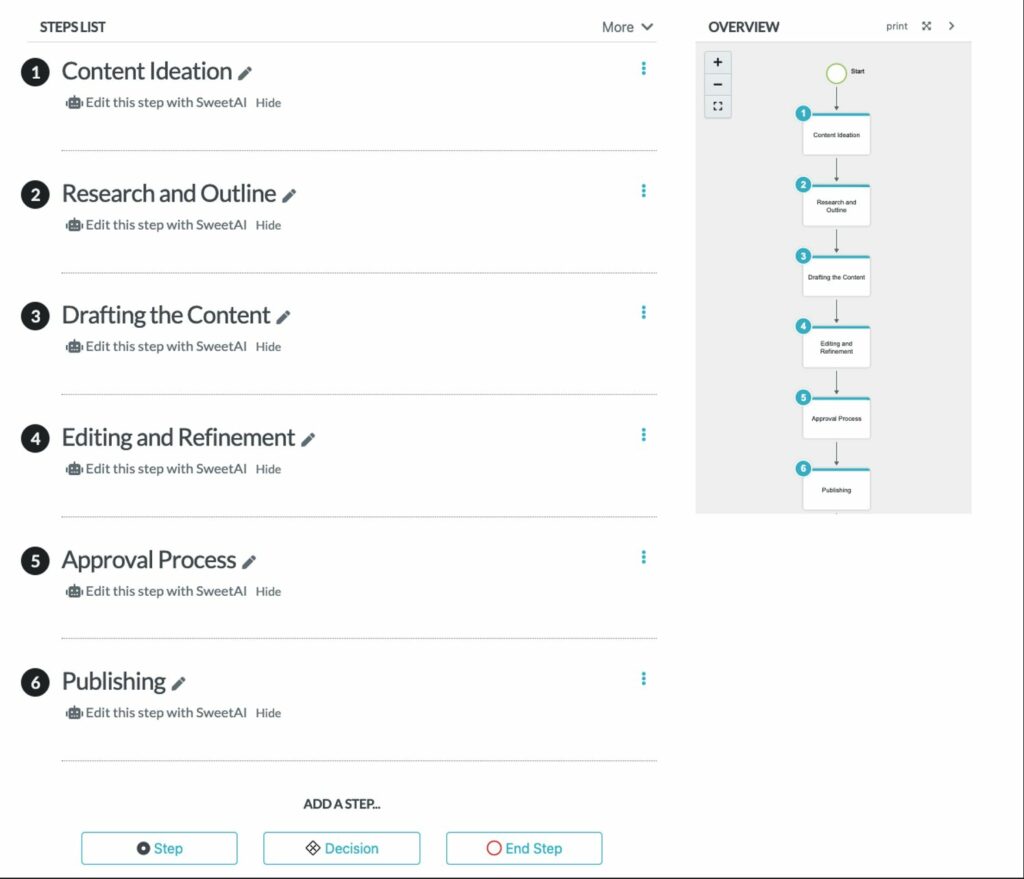
Create a Business Process
To create a process, click on the “More” drop-down menu from your SweetProcess dashboard and click “Processes” as shown below.

That will take you to a screen similar to the screenshot below.

Click “Create Process” from here, as shown in the screenshot above. And that will lead you to a screen similar to the screenshot below.

You can name your process and click “Continue,” as seen in the image above. It will take you to your newly created process, as seen below, where you can edit it to meet your needs.
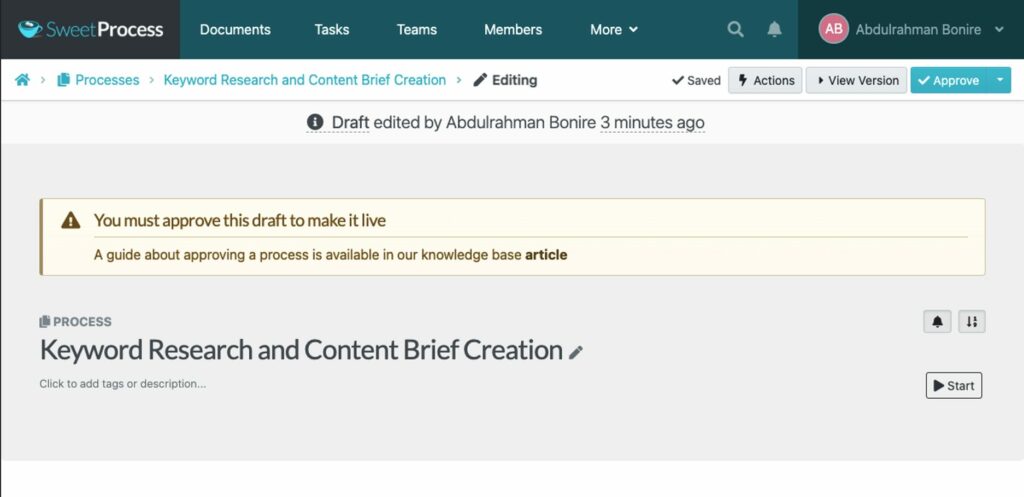
Manage Your Procedures and Processes
To manage your procedures, click the “More” drop-down menu from your SweetProcess dashboard and click “Procedures” as shown below.

That will take you to your list of available procedures, as shown below.
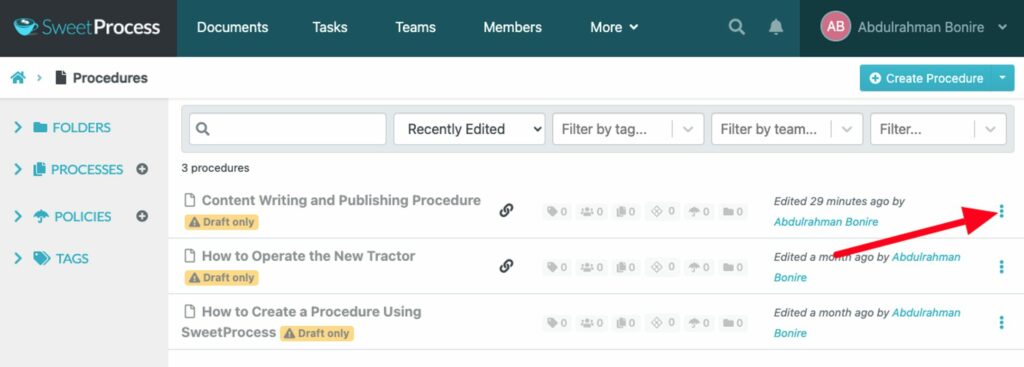
From here, click on the three dots in front of the procedure you’d like to manage, and you’ll be presented with all the procedure management options, as seen in the image below.
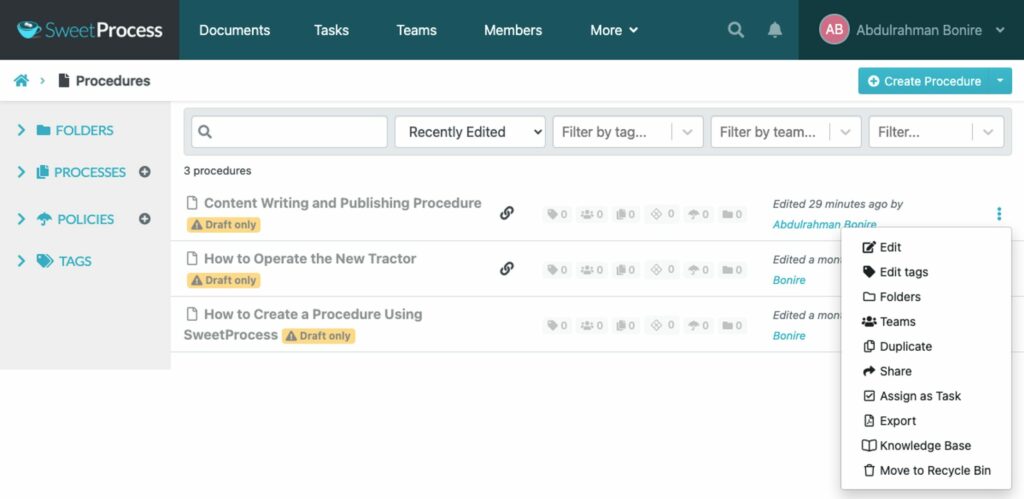
As seen above, you can edit your procedure, edit tags, and move your procedure to a folder, add teams to the procedure, duplicate the procedure, share it with someone, assign a task to an individual or teams, export the procedure, or even turn it into a knowledge base. If you are done using the procedure, you can move it into the recycle bin.
Collaborate With Team Members

You can collaborate with team members either on an individual level or at the team level.
To collaborate with an individual on your team, click “Members,” as shown in the screenshot below.

You will see a screen similar to the one below.

Click the three dots in front of the name of the individual you want to collaborate with, and you’ll be presented with an option, as seen in the screenshot below.
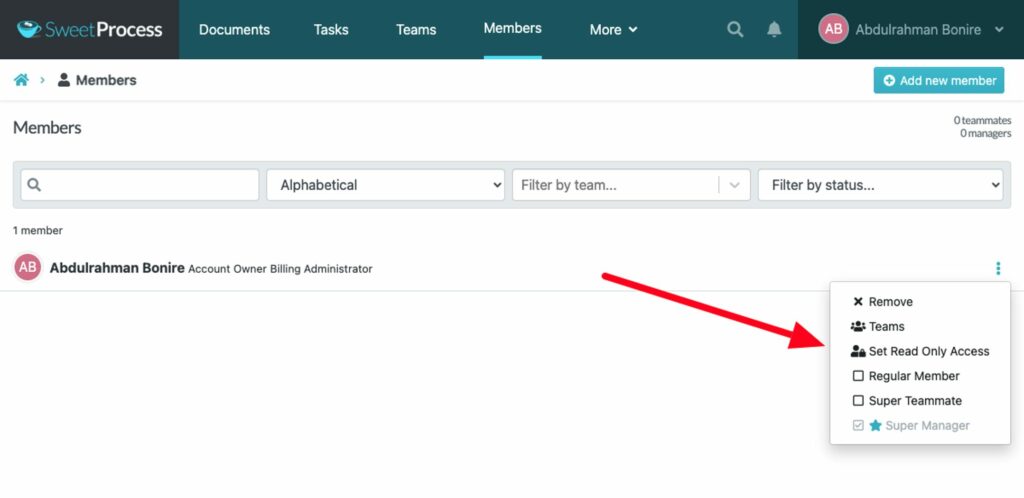
To collaborate on a team level, click “Teams,” as seen below.

If you just signed up for SweetProcess and don’t have any teams yet, here’s how to create one: Click “Create Team,” as shown in the screenshot above. You’ll be taken to a screen similar to the one below.
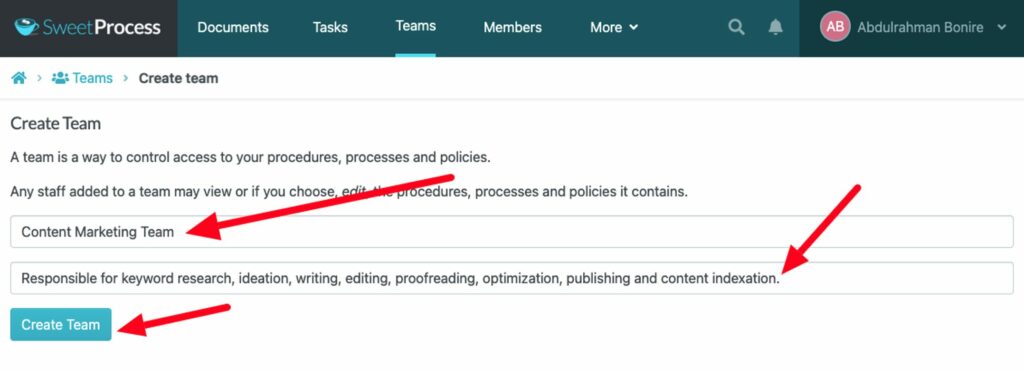
Here, you can give your team a name, add the appropriate description, and click “Create Team,” as seen in the image above. You’ll see a screen similar to the image below.
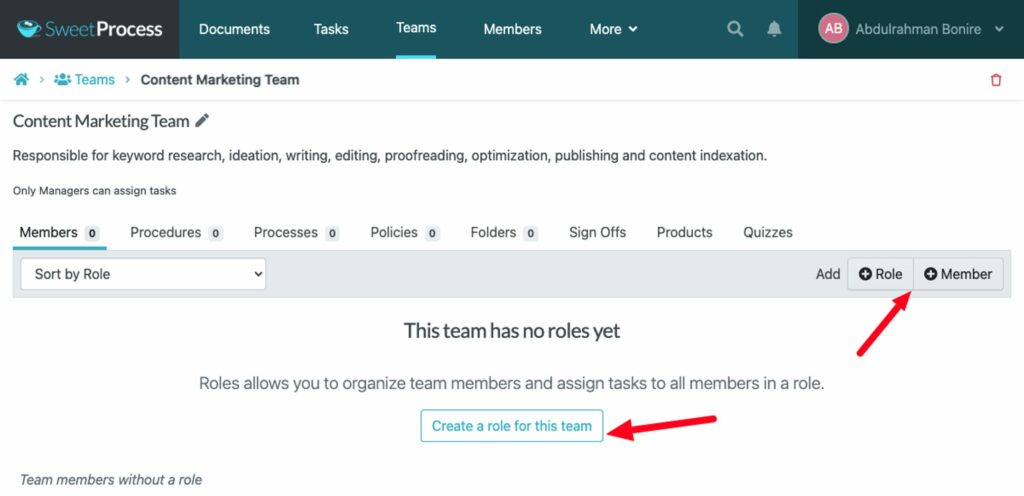
From here, you can add your team members and assign roles to them as a team.
One of the ways to implement root cause analysis in your organization and make it sustainable is by taking your team along all the steps of the way. Here is where SweetProcess comes in. It lets you assign tasks to your teams and ensures seamless collaboration with your team members.
With this, you can keep tabs on any change your team members make while ensuring that the solutions found can be well implemented.
How XL.net Streamlined Its Root Cause Analysis Using SweetProcess
Imagine having 2,000 different processes in your company. It might sound great, but it wasn’t for XL.net. The CEO of XL.net, Adam Radulovic, found himself in a situation whereby, despite being an IT company that helped other businesses succeed through technology, XL.net needed to improve its processes. It became so overwhelming that many of their processes were useless. The time, resources, and efforts spent creating them—all gone to waste.
They started facing situations different from what they expected versus what they got. Most of their processes were counterproductive. Rather than being efficient, employees were confused as they struggled to separate the valuable processes from the fluff.
It means one thing: service quality begins to drop, and more time and money will be spent worrying and trying to manage everything. An IT company known for streamlining other businesses’ operations is now struggling with its efficiency.
What Changed?
A client introduced them to SweetProcess. For Adam, the decision to try SweetProcess was driven by a pressing need to fix what he saw happening in his company. There was declining client satisfaction, increasing labor hours, and general inefficiency across the board.
Choosing SweetProcess—The Outcome
SweetProcess helped XL.net streamline its business processes. Instead of worrying about documentation, their team finally had a clear path to follow, leading to a more efficient team output and, most importantly, client satisfaction.
Using SweetProcess ensures that the team grasps the needed knowledge. Regardless of the time spent in the organization, team members do not have to rely on their colleagues or go through countless folders for information because they already have standardized procedures using SweetProcess.
Thanks to the SweetProcess, Adam has discovered new ways to streamline operations in his organization. A clear framework showed him how to enhance workflows and improve efficiency.
Would you like to taste how SweetProcess can help streamline your business operations? Get started with a 14-day free trial. No credit card is required, and you can cancel anytime.
How Rise25 Streamlined Its Root Cause Analysis Using SweetProcess
Dr. Jeremy Weisz, a co-founder at Rise25, connects businesses to their clients to foster relationships through podcast and content marketing strategies. However, behind the scenes, the company was having issues managing the many moving parts of podcast production, which was becoming challenging as the day went by.
Jeremy and his team initially created standard operating procedures (SOPs) using Google Docs. However, as their operations grew, they found this unstructured documentation system needed to be revised. It became clear that maintaining efficiency took a lot of work. The team members always needed Jeremy’s assistance to access the disorganized files.
The result?
This issue caused frustration in the company, which started experiencing operational inefficiencies, slowing its growth.
What Changed With SweetProcess?

Jeremy was determined to fix the issue, so he had to seek a better way to streamline their processes. That’s when Rise25 adopted SweetProcess, and guess what? The transformation was immediate.
SweetProcess provided the team with a structured platform for documenting and accessing SOPs. Tasks that previously required constant guidance became straightforward, resulting from the centralized system that was easy to access.
Initially, Jeremy was skeptical about investing in a paid system, but he saw the value during SweetProcess’s onboarding. The framework provided empowered the team to create and manage processes independently.
Benefits for Rise25
According to Jeremy, when he was interviewed, he expressed his surprise when he received the report from his employees that there had been significant improvement within the first two weeks of adopting SweetProcess.
“Within the first week or two, the team was like, ‘This is amazing. We can find things, and we can create processes,” he said.
He further expressed that employees can find and implement SOPs seamlessly and without help since the organization adopted SweetProcess. It has effortlessly reduced workload and increased productivity.
Rise25 now operates with a transparent, organized system that enhances internal efficiency and client satisfaction. The team no longer struggles with documentation or bottlenecks, and they have ample time to focus on what truly matters.
It means one thing: SweetProcess offers benefits beyond being a process documentation tool; it empowers companies to improve efficiency, enhance collaboration, and drive client satisfaction.
Are you ready to experience something similar to what XL.net and Rise25 experienced in their businesses? Start your 14-day free trial of SweetProcess today; no credit card is required.
7 Tools for Performing a Root Cause Analysis
Pareto Chart
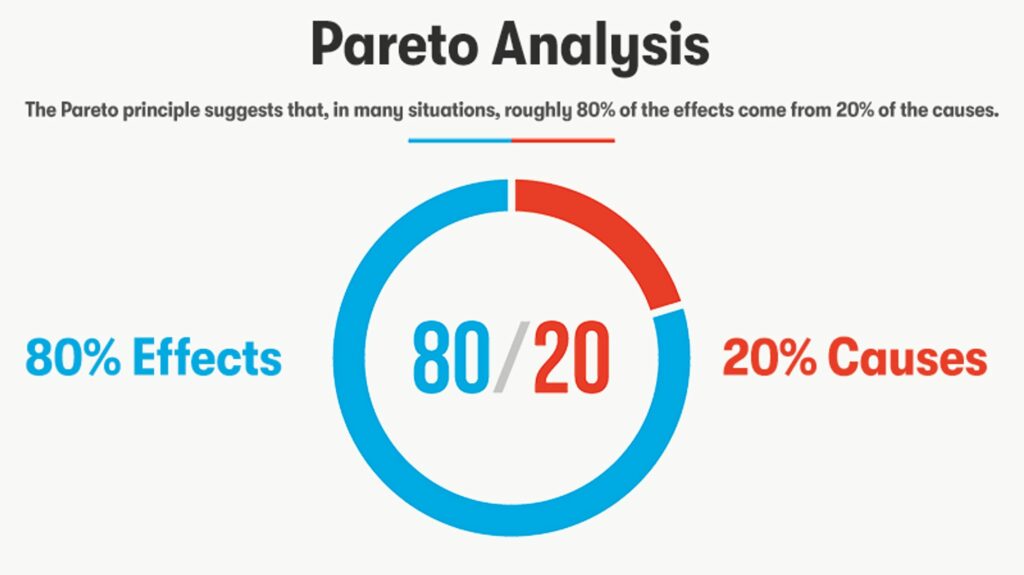
Image Source: PurpleGriffon.com
According to a Pareto chart, 80% of problems usually come from about 20% of causes. Based on the Pareto principle, this simple chart makes it easy for teams to identify the most crucial factor in a data set. The bars are arranged from the tallest down to the shortest. It makes it easy to spot where the big issue lies, allowing teams to focus their efforts more on where the efforts can be felt.
This chart is commonly used in lean manufacturing, healthcare, productivity and business management, wealth distribution, economics, and software development.
Fishbone Diagram
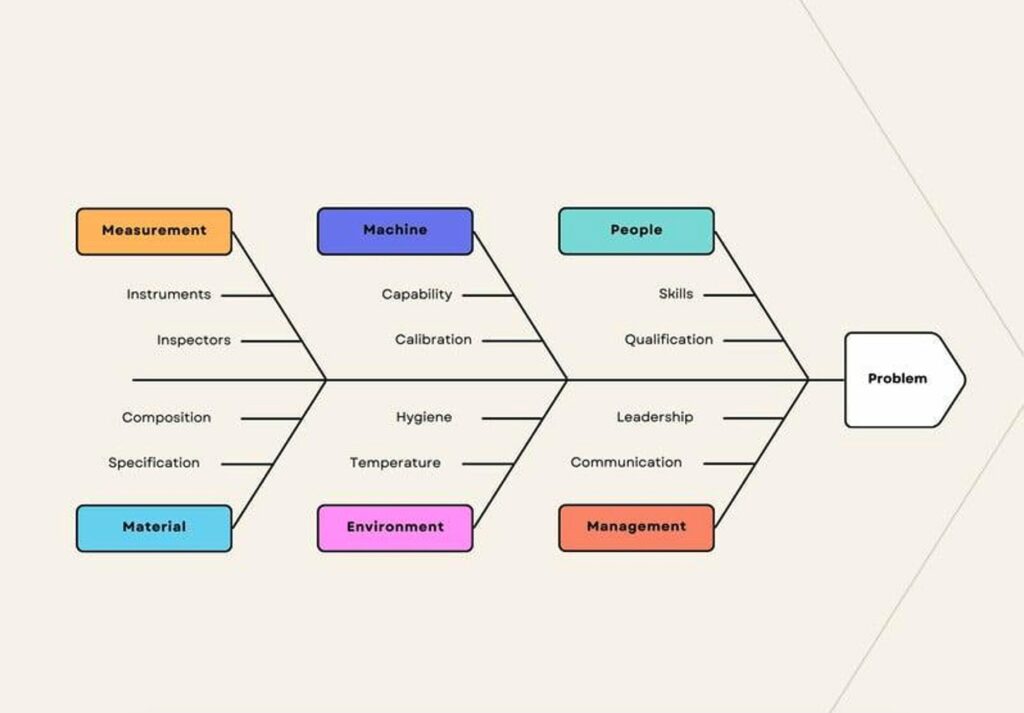
Image Source: MarketPlace.Canva.com
The fishbone diagram is a visual tool used in group discussions to get to the root of a problem. This tool is named after Japanese quality control expert Kaoru Ishikawa. It is shaped like a fishbone, with the problem placed at the “head” and possible causes placed as the branch-like bones. This structure allows the teams to organize and have access to what could be the potential causes clearly and systematically, making it easier to understand how different factors are connected.
This tool is used in project management, product development, and troubleshooting. Industries such as healthcare, education, and service sectors utilize the fishbone diagram to analyze cause and effect.
The Five Whys
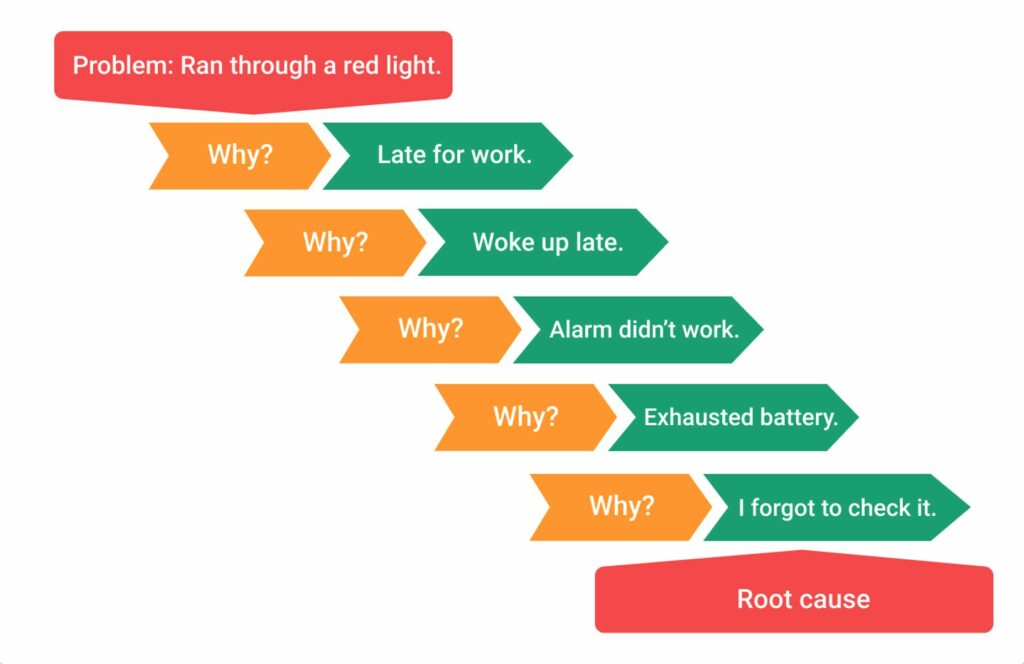
Image Source: BusinessMap.io
The five whys method is another simple but powerful way to get to the root cause of a problem. Usually, it helps if you ask “why” repeatedly, like five times, to dig deeper into the issue. This tool works best when each answer is based on factual evidence. It ensures that you have a clear path to digging into the cause.
Failure Mode & Effects Analysis (FMEA)
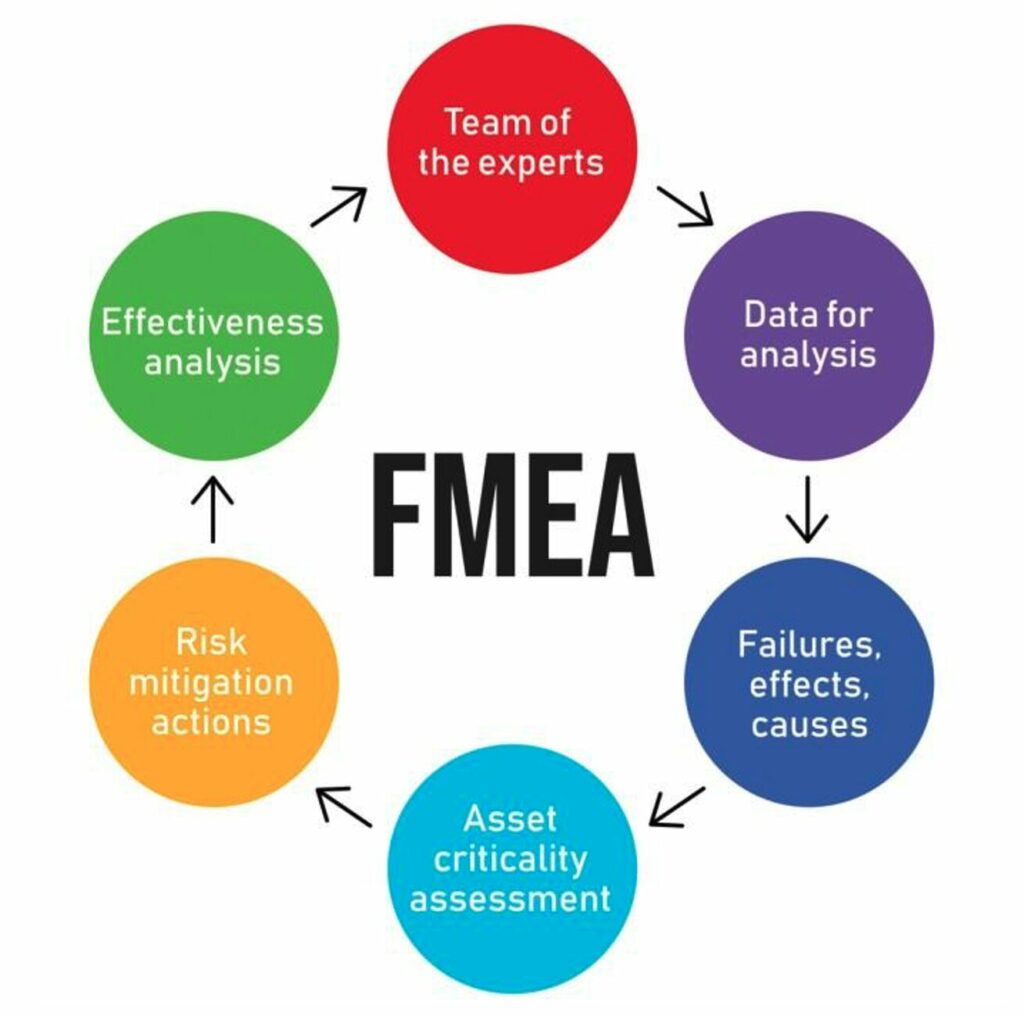
Image Source: Media.licdn.com
This proactive approach helps teams spot potential process failures before they happen. The team can address issues early by examining where and how a process might go wrong and the possible impacts. FMEA has three steps: identifying potential failures, assessing their effects, and ranking them based on severity, likelihood, and detectability.
Fault Tree Analysis (FTA)
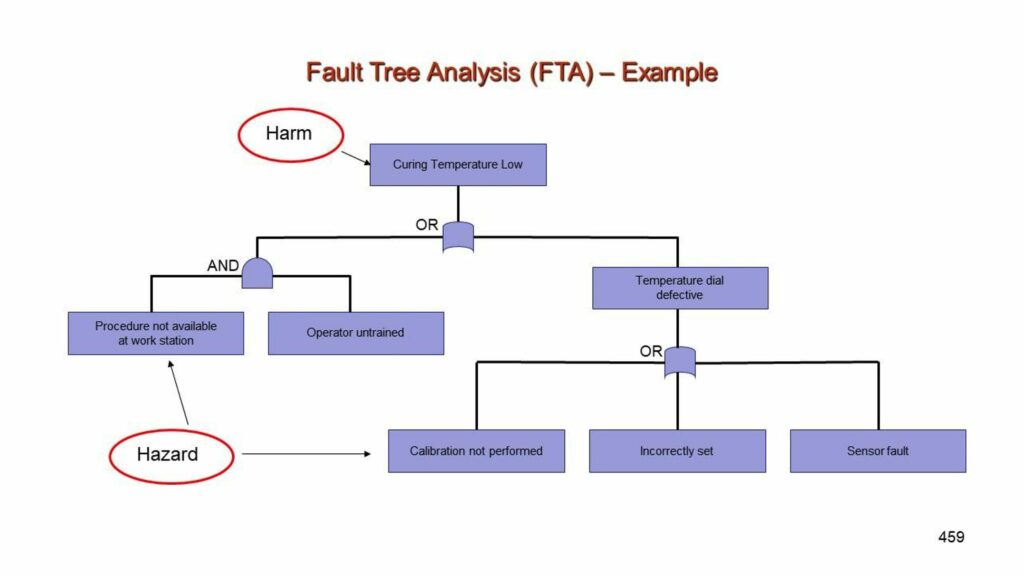
Image Source: PresentationEze.com
Fault tree analysis (FTA) is a top-down approach needed for an organization that wants to understand the causes behind faults or failures. FTA maps out possible causes visually by creating a tree-like diagram, making it easier to trace the root of the problem. It is mostly valuable in industries like aerospace and nuclear power, where it is essential to prevent failure.
Kepner-Tregoe Root Cause Analysis
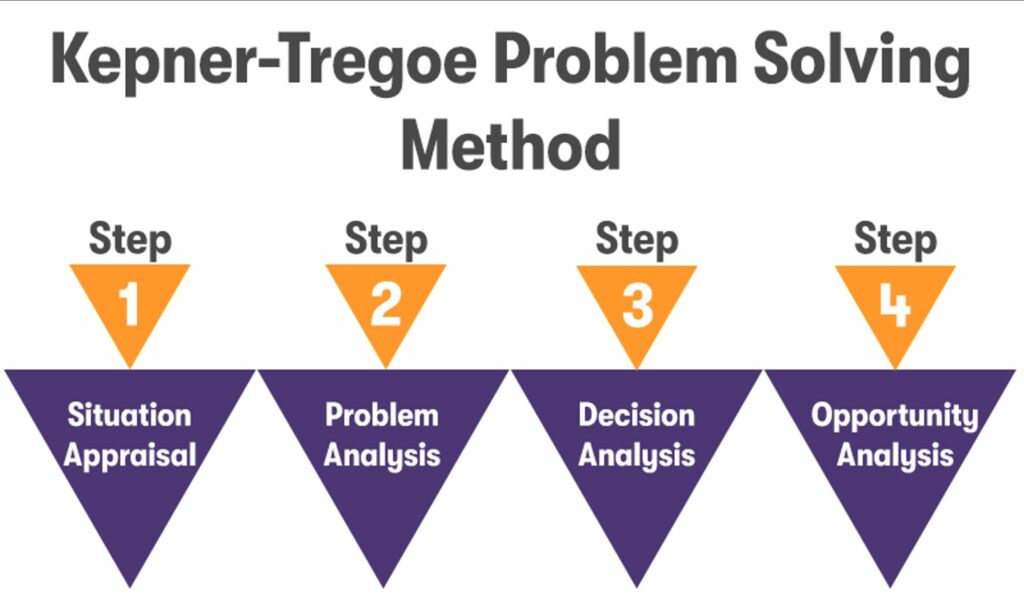
Image Sources: PurpleGriffon.com
The Kepner-Tregoe root cause analysis (RCA) is a structured approach to solving complex problems and making clear decisions. This Root Cause Analysis method defines the problem, analyzes its cause, finds possible solutions, and implements the best action. The process is divided into four key steps: situation appraisal, problem analysis, decision analysis, and potential problem (opportunity) analysis. The Kepner-Tregoe Method helps teams tackle issues with clarity. It is a go-to tool for organizations where critical thinking and effective problem-solving are crucial.
Scatter Diagram
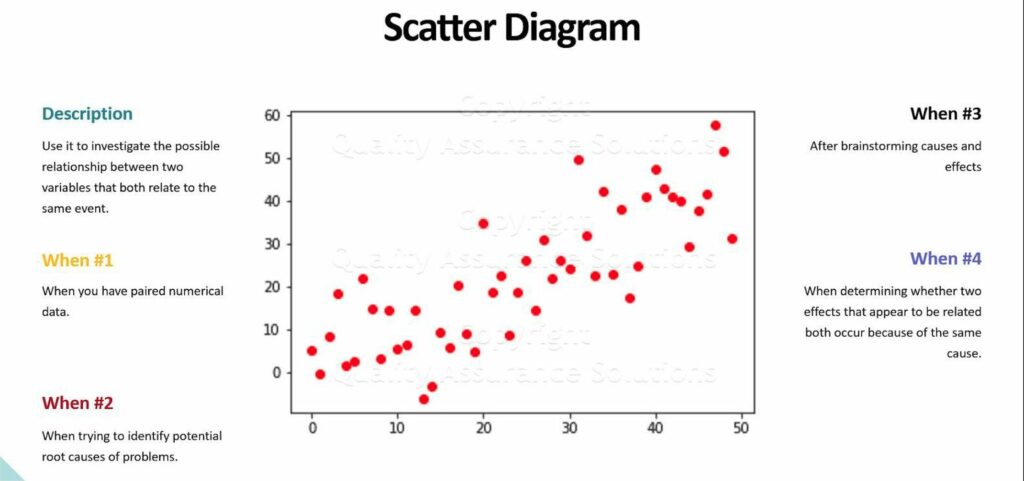
Image Source: Quality-Assurance-Solutions.com
The scatter diagram is a Root Cause Analysis tool visually representing the relationships between two or more variables. This tool helps identify patterns between an outcome and a potential root cause. Using a graph, it further provides insight into how two or more variables affect each other.
11 Benefits of Root Cause Analysis in an Organization
Here are some of the benefits of carrying out a root cause analysis in your business:
1. Quickly Identifies the Root Cause of a Problem
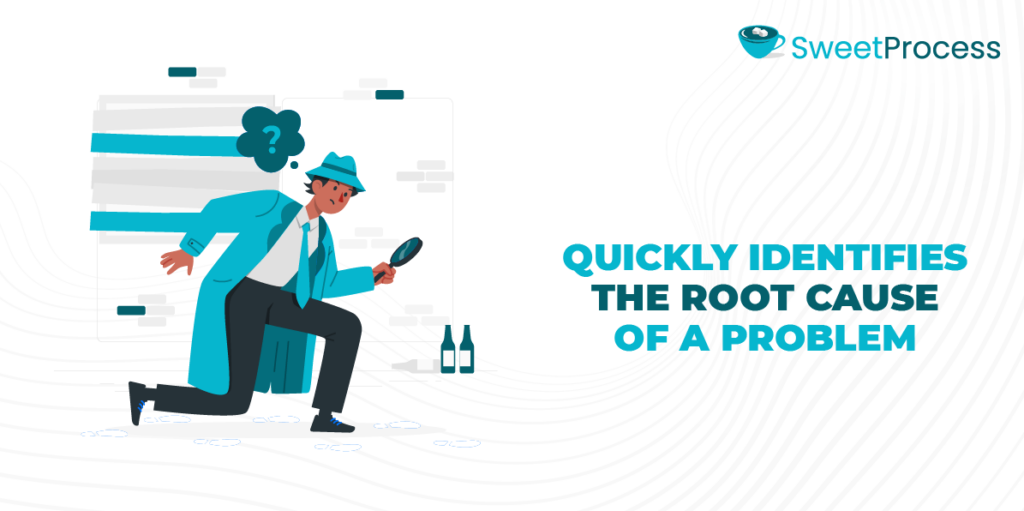
RCA streamlines the process of pinpointing the exact source of an issue, saving time and resources without depending on surface-level assumptions. Deploying root cause analysis helps you address the problem at hand, solve it, and reduce the future occurrence of such a problem.
2. Illustrates How One Process Can Cause a Chain of Problems
In complex systems, one error can ripple through multiple processes. Root cause analysis exposes these multiple error connections, demonstrates how perceived minor problems could become complicated, and addresses these issues holistically.
3. Helps Determine the Relationship Between Different Root Causes
Often, problems stem from multiple interrelated root causes. RCA helps organizations determine root causes and their relationships and show how different factors contribute to problems.
4. No Need for Complicated Evaluation Techniques
While RCA is thorough, it doesn’t have to be overly complex. Many root cause analysis tools are liable to make the process more direct and accessible regardless of experience regarding advanced problem-solving methods. Some of the tools include the five whys and fishbone diagram. They involve an approach that encourages critical thinking and enables us to make informed decisions about process improvement based on our understanding of the underlying issues.
5. Improving Operational Efficiency
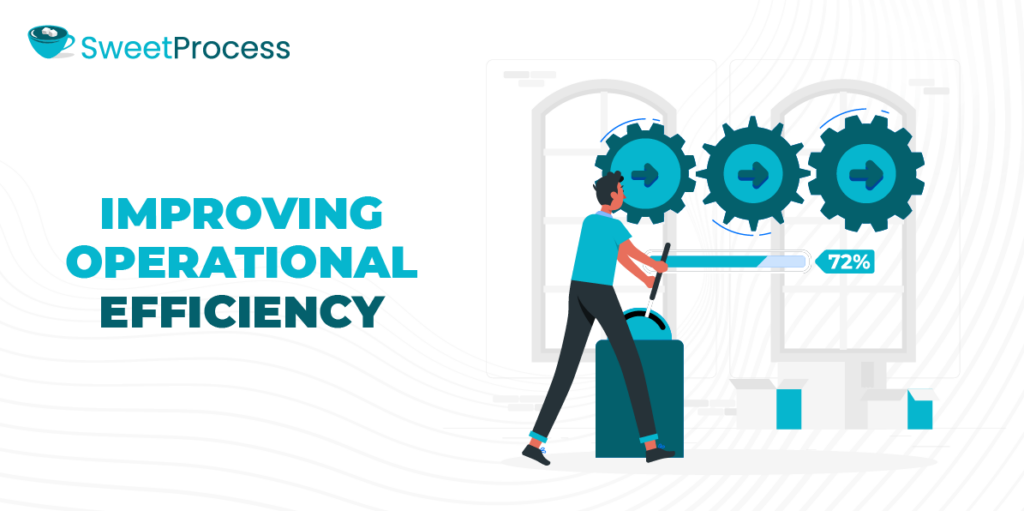
By addressing root causes, organizations eliminate inefficiencies that drain resources. It helps an organization to have a more efficient workflow, reduce downtime, and automate productivity.
6. Boosting Customer Satisfaction
When problems are resolved at their source, the quality of products and services improves. Happy customers translate to increased loyalty, better reviews, and a stronger reputation in the market.
7. Increasing Profitability

When a company deploys efficient problem-solving, it can minimize waste, downsize costs, and increase productivity in an organization’s bottom line, making RCA one of the best tools to troubleshoot problems and drive profits.
8. Regulatory Compliance
Sometimes, organizations may face safety incidents triggered by root causes, which are not noticed until it is too late. Deploying RCA can expose the issues and provide a safer working environment with reduced accident risks.
9. Workplace Safety
A successful RCA requires input from various stakeholders, including directly involved employees, supervisors, and management. Collaborative analysis helps collect various viewpoints and promotes a sense of collective accountability for workplace safety.
10. Environmental Incidents
When an organization has environmental issues such as contamination, emissions, or harmful ecosystems, such organizations or industries can deploy RCA to prevent or reduce the environmental impact by identifying the cause and the environment to achieve sustainability goals.
11. Operational Failures
Organizations must avoid operational failures because they can be fatal, costly, and disruptive. Organizations that can identify why their equipment broke down or had an interrupted process can use RCA to improve their processes and ensure a more reliable performance.
Root Cause Analysis Report
1. Change Analysis

Change analysis studies process variations that could have contributed to the root cause. The change analysis report method compares past and current practices to identify what has happened recently as different from what used to happen and establish why and how that might have caused the problem.
2. Causal Factor Analysis
The primary focus of causal factor analysis is identifying a specific cause or circumstance that leads to the problem. While locating these factors, the RCA team can target the exact points where intervention is needed.
3. Barrier Analysis
Barrier analysis evaluates the safeguards and controls that failed to prevent the problem. It highlights weaknesses in existing barriers and suggests improvements to fortify them against future occurrences.
Simplify your RCA reporting. Start managing and automating your RCA processes with SweetProcess. Sign up for your free trial and transform how you address and resolve challenges.
Common Pitfalls in Root Cause Analysis and How to Avoid Them
Without any doubt, root cause analysis is one of the most potent tools to troubleshoot causes. Some pitfalls can hinder its effectiveness if adequate measures are not taken. Below are some of the common challenges facing RCA with strategies to overcome them:
1. Relying on Common Knowledge or Assumptions
Avoid jumping to conclusions based on superficial understanding. Use data and evidence to validate findings.
2. Not Involving all Stakeholders
While analyzing your organization’s root cause, excluding key or some team members can lead to incomplete analyses. Ensure that everyone affected by the problem has a say in the process.
3. Lack of Communication

When identifying and analyzing the root cause, it is crucial to maintain clear and transparent communication throughout the RCA process. Poor communication tends to create gaps in understanding and hinder collaboration.
4. Not Taking Action
If you identify the root cause, you only fought half of the battle your company is facing. Ensure corrective measures are implemented promptly.
5. Not Tracking Problems
If there is no ongoing cause monitoring, issues may resurface. Ensure that your company uses tracking systems to measure the effectiveness of solutions over time.
6. Cost Involved
Some root cause analysis processes can be resource-intensive. Prioritize high-impact problems to maximize return on investment.
7. Inaccurate Data
Faulty or incomplete data can distort results. Invest in accurate data collection methods to ensure reliable insights.
Avoid these pitfalls with ease. SweetProcess makes RCA simpler and more effective. Start your free trial today and see how to tackle root cause analysis efficiently.
How Root Cause Analysis Differ From Other Terminologies
Root Cause Analysis vs. Fishbone
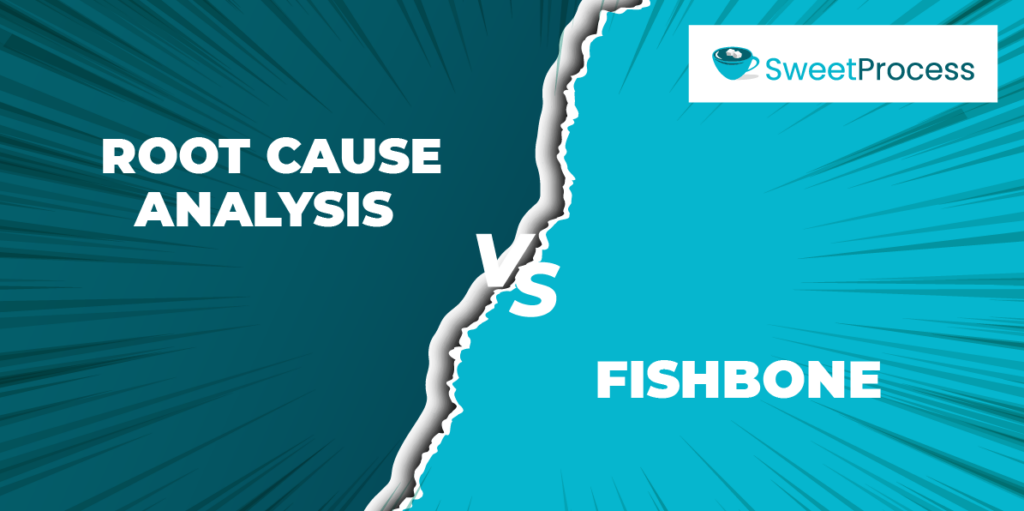
The fishbone diagram, also known as the Ishikawa or cause-and-effect diagram, is a visual representation used to identify potential causes of a problem. While RCA focuses on uncovering the root cause of an issue, the fishbone diagram is a brainstorming tool to map out all possible causes before deeper investigation. RCA typically goes further, using techniques like data analysis and testing to verify and address the root cause.
Root Cause Analysis vs. Five Whys
The five whys technique is straightforward and involves asking “why” multiple times until the root cause of a problem is identified, analyzed, and solved. Although this approach is a component of root cause analysis, regardless, RCA sometimes uses more sophisticated tools and methods to conduct a thorough analysis. It enables RCA to provide a more comprehensive framework, especially for detailed data collection and analysis issues.
Root Cause Analysis vs. Gap Analysis
Gap analysis evaluates the differences between current performance and desired outcomes, identifying gaps to be addressed. While gap analysis focuses on what needs improvement, RCA investigates why those gaps exist. RCA dives deeper to uncover systemic issues, while gap analysis offers a broader performance overview.
Root Cause Analysis vs. Failure Analysis
Failure analysis focuses on understanding why and how a system or component failed. Conversely, RCA uses a broader lens to identify technical failures and processes, human, and organizational factors. Also, RCA is designed to prevent occurrence and recurrence by examining underlying causes, while failure analysis is often more focused on technical diagnostics.
Root Cause Analysis vs. Troubleshooting
Troubleshooting is a reactive cause analysis process focusing on resolving an immediate problem. RCA does not only solve the root cause but also analyzes and identifies the underlying cause to prevent recurring issues in the future. Troubleshooting fixes symptoms, but RCA examines how the problem is ingested and proffers a long-term solution.
Manage Your Company’s Root Cause Analysis Seamlessly Using SweetProcess
Root cause analysis goes beyond just a tool for solving problems—it checks organizations on managing issues sustainably. When you do it correctly, you have saved yourself the stress of always quenching a fire you can avoid in the first place or have better control of. Implementing RCA might be challenging if you don’t have the right systems. SweetProcess is the best bet in situations like this.
Now that you know what carrying out a root cause analysis will do to your business, you should keep recurring problems from holding down your growth.
Take that proactive step toward effective problem-solving by starting your 14-day free trial of SweetProcess today. No credit card is required, and you can cancel anytime.


